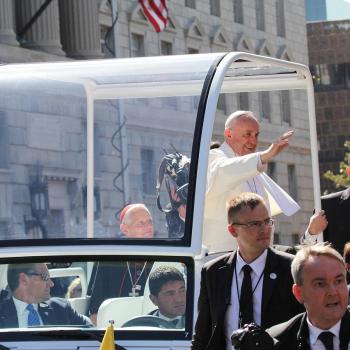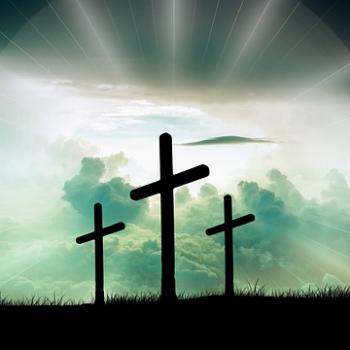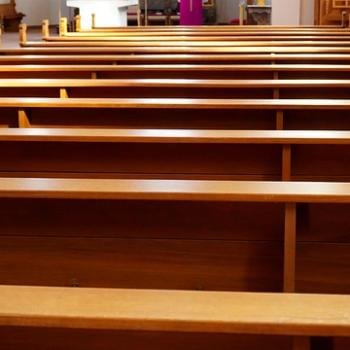THE RELIGION GUY SAYS nobody has yet posted a question about The Church of Jesus Christ of Latter-day Saints (a.k.a. “Mormon” or “LDS”) acknowledging delicate details about founding Prophet Joseph Smith’s polygamy, but The Guy decided he ought to examine the classic matter of how the Bible views polygamy.
Smith declared that God was simply using him to restore “plural marriage” (the church prefers that term to “polygamy”) that was divinely inspired in the Old Testament. A major interpretive question affects such Old Testament issues, including slavery. Did God command, or commend, a practice, or did he merely avoid punishing what humans were doing on their own? If the Bible recounts an action without tacking on moralistic criticism, does that signal divine endorsement, or only recording of facts that may be problematic?
Mormons are correct that there was “polygyny” (one husband, multiple wives) in the Old Testament, though not the “polyandry” (one wife, multiple husbands) that Smith also practiced. LDS Scripture disagrees with the Bible by listing Isaac as polygamous. As for others the church cites: Abraham married both Sarah and Keturah, though the latter perhaps after Sarah died, with Sarah’s urging took servant Hagar as a concubine to produce offspring, and had other concubines. Jacob married two sisters, Leah and Rachel, because of their father’s trickery, and each sister later gave Jacob servant girls as wives to produce more offspring. Moses had two wives. Polygamy was often associated with the ruling class, as with Kings David and Solomon. The latter overdid it with 700 wives and 300 cocubines (1 Kings 11:3), ignoring God’s rule that the king “shall not multiply wives for himself” (Deuteronomy 17:17).
The traditional Jewish and Christian belief is that the biblical God established monogamy as the ideal (Genesis 2:18-25). Though Old Testament law permitted polygamy, the Bible often linked it with evil, envy, family strife, and spiritual and moral decline. Lamech, the first polygamist, was the symbol of brutality. Moses’ second marriage stirred opposition to his leadership. Solomon’s harem “turned away his heart after other gods.” And so forth. The later biblical prophets embraced monogamy to symbolize union with God. Mainstream Christianity from its earliest days required monogamy due to Jesus’ scriptural teaching (Matthew 19:5, Mark 10:7-8, Luke 16:28).
In LDS history, polygamy was a major cause of persecution, including Smith’s own assassination in 1844. Church authorities openly proclaimed their formerly hidden practice in 1852 but then abolished it in the 1890 “Manifesto” following fierce U.S. government and culture pressures (though the polygamy command remains in the LDS Scriptures and the faith’s theology of heaven).
God had mandated monogamy in Smith’s earliest revelation, The Book of Mormon, published in 1830. Smith indicated that just one year later God gave him the new polygamy revelation, though it wasn’t written down till 1843 in the Scriptures the church uniquely adds to the Bible (Doctrine and Covenants 132). There God says of the biblical polygamists “in nothing did they sin save in those things which they received not of me.”
Some weeks ago the church quietly posted online its lengthy new account of Smith’s deeds, linked off a prior item on “plural marriage”: www.lds.org’topics/plural-marriage-in-kirtland-and-nauvoo?lang=eng. This “topics” page has lately interpreted other LDS controversies, such as the former ban on blacks in all church offices. The ever-estimable Peggy Fletcher Stack of The Salt Lake Tribune grabbed the polygamy news, followed by many others. Historians had already reported these intriguing details in the LDS statement (don’t miss the footnotes) but they’ll be new to many Mormons and non-Mormons:
Smith wed “between 30 and 40” wives. He concealed from legal wife Emma marriages that lacked her consent. Churchmen had to lie to cover up polygamous marriages before they reached Utah and after the Manifesto. Though some of Smith’s bonds were for heaven only, others were sexual in this life and it’s “possible” he fathered unacknowledged children. The first extra wife, teenage maid Fanny Alger, lived in the Smiths’ home. Many others were teens and the youngest was 14, an age “inappropriate by today’s standards” but “legal in that era.” A dozen or more of Smith’s wives were already married to other men. The church statement omits Todd Compton’s report that Smith was sometimes coercive toward the young women and that he wed four pairs of sisters and at least one mother-daughter pair.
SPEAKING OF MARRIAGE, there’s some media buzz over a book by Barrie (“How Jesus Became Christian”) Wilson and filmmaker Simcha Jacobovici, whose “Jesus’ tomb” claim never caught on. Now they’ve coauthored yet another tale about Jesus marrying Mary Magdalene and siring children. Theirs depends on one of those supposed codes hidden in ancient writings, here a non-biblical romance about biblical Joseph and Aseneth that never mentioned Jesus or Mary. The oldest Aseneth text dates from the 6th Century A.D. Codes aside, though earlier texts may have been lost there’s a big time gap back to Jesus’ day that rules out historicity, as with another married-Jesus claim this blog treated April 21: www.patheos.com/blogs/religionqanda/2014/04/was-jesus-married.












